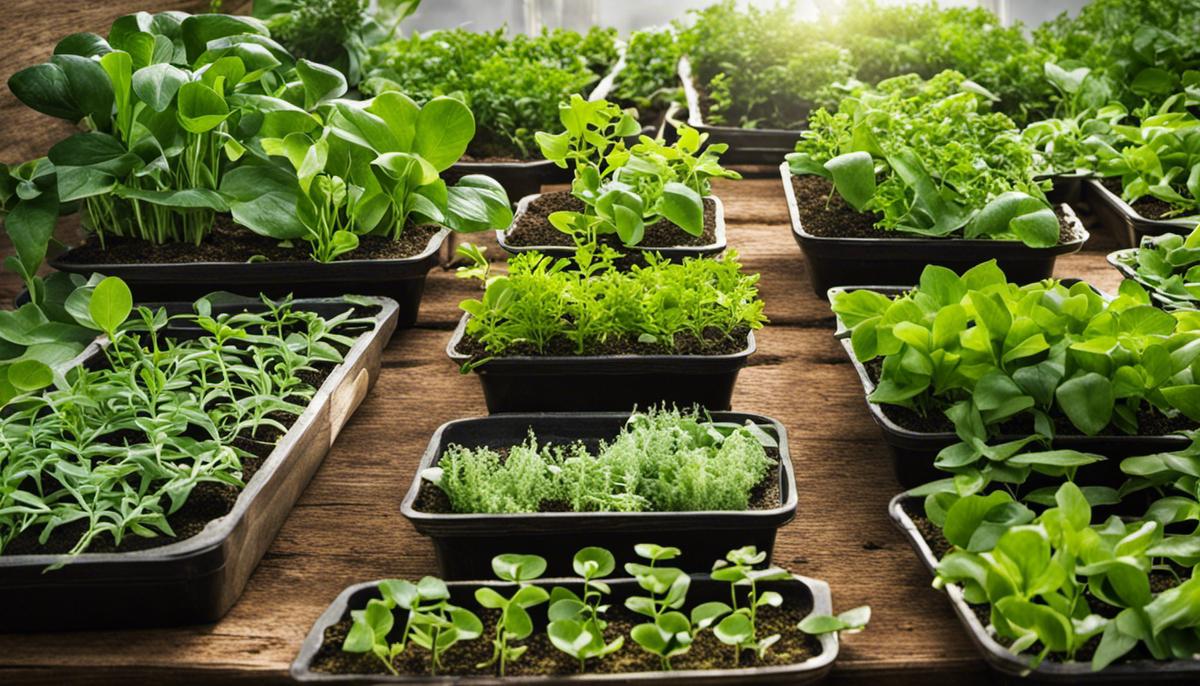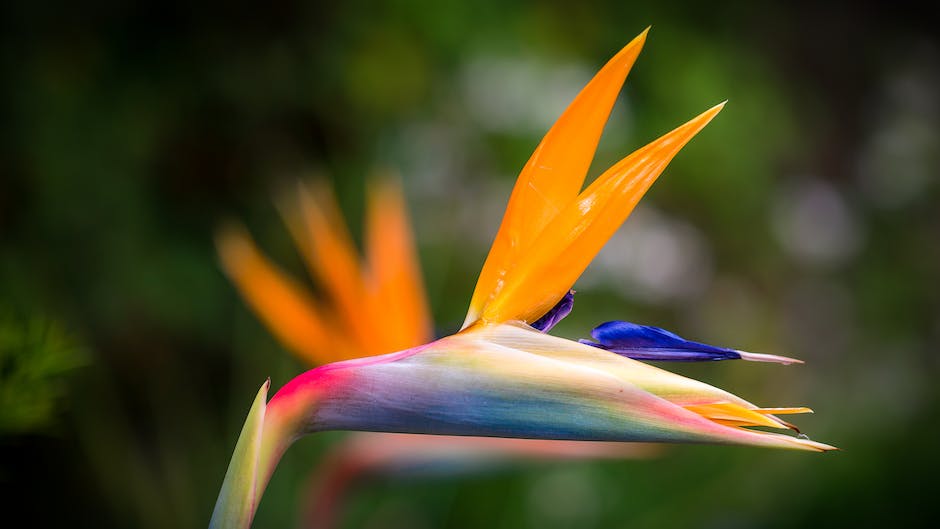Mastering Bird of Paradise Propagation

In the thrilling world of plant propagation, the Bird of Paradise stands out easily as one of the most intriguing species. To a gardening enthusiast, the propagation of this plant, with its dramatic blooms and tropical allure, can be a unique and rewarding venture. This discourse serves to guide you in comprehending the process, providing necessary knowledge about the Bird of Paradise, before diving into the practical steps of propagation. From an overall understanding of plant propagation methodology, including the propagation via seeds, cuttings, layering, and division, to the specific characteristics and care requirements for the Bird of Paradise, this piece aims to provide a thorough and informative blueprint.
Understanding Plant Propagation
The Marvel of Plant Propagation – and Why Your Green Thumb Will Thank You!
Oh, the thrilling world of plant propagation! Can you feel the locked up potential, waiting to spring forth from a tiny leaf or cutting? It’s a universe that bursts with life and opportunity – a galaxy for your green thumb to explore! Imagine being more than just an observer, but a participant and even a creator in the cycles of plant growth.
So, what exactly is plant propagation? Picture it as the process that kick-starts life for a plant. It’s essentially nature’s way of reproducing plants, and guess what? We, as horticulturists, can play a vital role in it!
There are two main types of propagation: sexual and asexual. The former is nature’s traditional go-to, involving seeds or spores. You know the usual pollination story: birds, bees, and blooming blossoms–yes that’s part of sexual propagation. On the other hand, asexual propagation bypasses the seed route and goes directly from a mature plant part such as stems, leaves, or roots to a brand-new plant–efficient and innovative, to say the least. Which route you opt for depends on your ambitions, the plant species at hand, and the resources you’re willing to use in this green endeavor.
The fundamental reason propagation is important? Without it, there would be no new plants–a world without fresh green sprouts, no blossoming flowers, and definitely less oxygen. But let’s not get too gloomy. There’s a more personal reason for taking the plunge into the wonderful world of propagation. It allows us, hobbyists, to breed our desirable plants, to multiply our green treasures, and wield control over the circle of plant life. Instead of just buying new plants, you, yes you, can be a part of their creation, nurture, and growth story.
It’s not just about producing new plants. The propagation journey can reveal many wonderful plant traits and secrets. You will be amazed at how diverse, adaptive, and surprising plants can be! From the exhilarating discovery of a cutting sprouting its first root to the triumphant feeling when a seedling unfolds its first leaves, there’s delight at every turn.
Growth mediums, humidity levels, watering routines – it may seem daunting at first, but the journey of plant propagation is worth every bit of effort and learning. It breathes a new level of connection between you and the captivating family of plants. The joy of hearing the whisper of new leaves unfurling, the sigh of contentment as roots anchor strong in the dirt – it’s an experience that’s personal, rewarding, and deeply gratifying.
And remember, propagation isn’t a race against time or even against other gardeners. It’s a voyage of discovery, a honing of skills, and an opportunity to create life in your special corner of the green world. As a plant propagator, you’re not just part of the cycle, you’re sustaining it, encouraging it, refining it–and that’s something to stand tall and leafy about!

Identifying Bird of Paradise Plant
Unveiling the Signature Characteristics of the Bold and Beautiful Bird of Paradise Plant
In the realm of plant propagation, there are hierarchies of complexity, vibrancy, and resilience — much like in any other hobby. At the summit of this timeworn tradition, sits the Bird of Paradise plant, or Strelitzia Reginae, a fascinating species with monumental individuality.
The first striking detail of the Bird of Paradise plant is its visual semblance to an exotic tropical bird, hence its name. With its vivacious blooms and dramatic foliage, it is a spectacle that commands attention. Its prolific petals escape in a myriad of colors — bursting electric blues and radiant oranges — emulating a bird soaring through an azure sky. Much like the grandeur of a bird spreading its majestic wings, this plant’s oversized, paddle-shaped leaves expand widely, crafting a lush and captivating visual display.
Apart from its visual grandeur, the Bird of Paradise thrives in unique growing conditions. Its root is quintessentially South African, and it basks in sunlight, thriving in well-drained soil and a generous watering regimen. It’s a true sun-worshiper, usually requiring a few hours of direct sunlight daily. However, it can tolerate partial shades while lending your surroundings an evergreen tropical aesthetic despite the changing seasons.
This plant’s resilience earns it a high-performing badge among enthusiasts and the propagation community alike. Despite its high sunlight needs, it stands robust against pests and diseases, reducing the stress on the propagator. In addition, it can tolerate a range of temperatures, displaying considerable cold hardiness despite its tropical origins.
One of the riveting aspects that contributes to the Bird of Paradise’s allure is its perennial life cycle. Once mature, this exceptional plant can flower all year round, depending on the climatic conditions, flexing its floricultural prowess right throughout the year. With the right care, these spectacular blooms can live long, gracing your environment with their vibrant elegance and tropical charm.
The Bird of Paradise plant also brings a delightful volatility to the propagation table. Each propagated plant can sprout subtly unique foliage and blooms compared to its parent, owing to genetic variability. These slight deviations result in a wide aesthetic array that can be curated and refined through careful propagation.
So, whether you’re a veteran plant propagator or just at the inception of your journey, incorporating the Bird of Paradise to your green ensemble adds not only an aesthetically pleasing tropical touch but also brings a unique propagation experience. It’s a symbiotic relationship; while you offer it the nurturing it craves, it rewards you in turn with unbeatable charm, vibrant beauty, and a fascinating propagation journey. And isn’t that the ultimate coupling we seek in this wonderful hobby of plant propagation?
Remember, the art of propagation isn’t just about producing clones. As each Bird of Paradise plant blooms, it can bestow upon you its own beautiful surprise, reinforcing the idea that propagation isn’t just about creation—it’s about embracing the wonderful unpredictability and individuality in the cycle of plant life. So, the next time you delve into your propagation endeavors, consider the bold and beautiful Bird of Paradise. This majestic flora trustfully awaits your devoted companionship on your shared propagation journey.

Steps in Propagating Bird of Paradise
Diving straight into the heart of the matter, today we are going to share tips on how to successfully propagate the vibrant Bird of Paradise plant. Known for its beautiful, crane-like flowers that burst open with rich color, this plant is a beloved favorite among propagators and plant enthusiasts alike.
In terms of propagation, propagating a Bird of Paradise plant from seed can be a lengthier and more challenging process when compared to division or cutting methods. The plant’s seeds are slow to germinate, but rest assured, patience in this process will yield beautiful, rewarding results.
The first step in propagating the Bird of Paradise involves carefully removing and cleaning the seeds from an adult plant’s flower. Be sure to handle these seeds with care, as they will soon become the birthplace of your new Bird of Paradise plant.
Next, soak the seeds in warm water for a day or two, until you notice the seeds swelling up. This process helps to fast track the germination process and wakes the seeds up from their dormant state.
With the seeds prepped, grab a pot and fill it with good-quality, well-draining potting soil, leaving just a bit of space at the top. Bird of Paradise seeds should be sown about a half-inch deep into the soil and lightly covered.
Then, it is watering time – keeping the soil moist but not super-saturated is key here. Too much water can result in seed rot, so remember moderation is crucial. Place the pot in an environment with stable, warm temperatures. Avoid extreme conditions, as it may deter the growth.
After planting the seeds, one should prepare for the waiting game. The germination process could take anywhere from a few weeks to a few months. It is indeed a test of patience, but keep faithfully watering and maintaining the required temperature in a well-lit area.
Dividing the Bird of Paradise plant is another alternative method that can be done during re-potting. Carefully detangle the root clumps and separate a stem with its roots, keeping as much root as possible intact. Repot the separated division into fresh potting soil, ensuring it is deep enough to support the plant.
Remember, propagation of the Bird of Paradise plant is not just about growth and expansion, but also about bonding with the plant, nurturing it, and learning through the process. It is more than just a hobby, it is about forging a relationship with Mother Nature, fostering growth in a microenvironment of your own.
Over time, with the right care, one will hopefully witness the emergence of beautiful young green leaves, a signal of success in your propagation endeavor. Nurturing a Bird of Paradise plant from propagation to full bloom is an empowering and enriching experience that truly brings joy to the heart and solace to the soul.
In conclusion, mastering these propagation steps can turn your humble home into a mini tropical paradise, bursting with the flamboyant colors of the Bird of Paradise plant. Happy propagating!

Nurturing a Bird of Paradise from propagation to maturity is quite an exciting horticulture journey. It’s a journey filled with a deeper understanding of the plant itself, the intricate steps involved in propagation, and its nurturing requirements. This in-depth knowledge of this process will not only instill in you a greater admiration for nature’s profundity, but it will also reciprocally reward your efforts, as the successful result of your endeavor will underscore the beauty of your garden for years to come. Remember, the Bird of Paradise propagation might demand patience and precision, but the vibrant and exotic plant that will eventually bloom from your cares is worth every effort.



